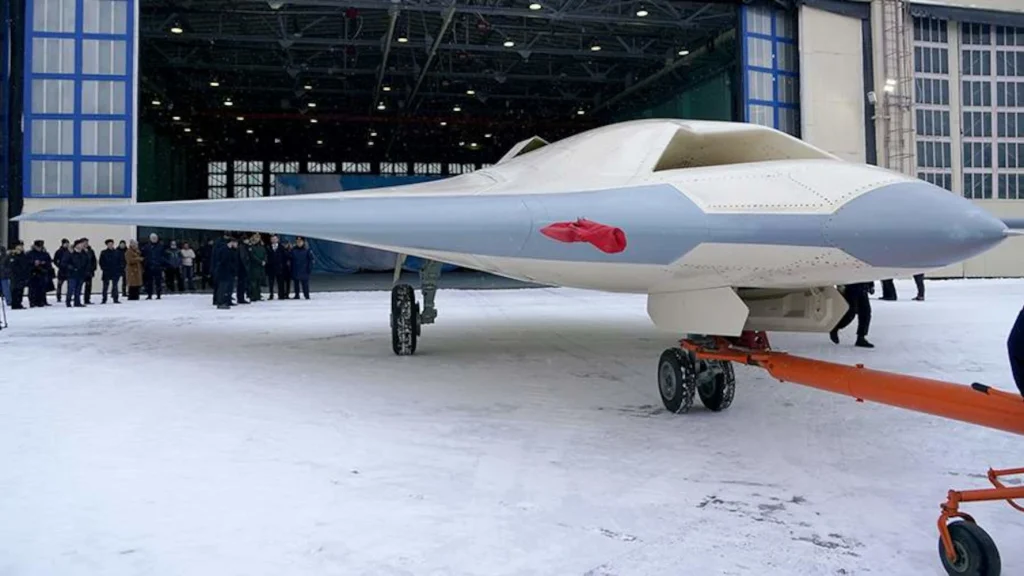Rostec, the State Corporation for Assistance for Development, Production, and Export of Advanced Technology, answers why Russian fifth generation fighter planes have 5 and 7 numerals in their names.
The International Military-Technical Forum “Army-2022” is being held from August 15 to 21, during which the Russian military-industrial complex demonstrates many of its most recent achievements. Rostec and UAC, two Russian corporations, are actively involved in the event.
More than 70 delegations from fifty countries are expected to attend the forum, and many military contracts will be signed with representatives of foreign companies. The state order for weapons production has increased this year in connection with the conduct of a special operation in Ukraine, and Rostec is taking the necessary steps to meet it.
As a result, additional production of Su-57 multifunctional fighters is planned, one of which is currently being demonstrated near the Patriot Convention and Exhibition Center.
Rostec revealed the significance of the number “57” in the aircraft’s name during the event.

In an interview with the Wings of War telegram channel, Rostec and UAC representatives stated that 5 represents the fifth generation, and 7 represents the link with the best domestic fighters of the Su line, which had the number “seven” in their names – Su-7, Su-17, and Su-27.
The same logic applies to the Su-75 checkmate light tactical aircraft, which is currently in production and whose first flight is scheduled for 2024. The S-70 Okhotnik heavy strike drone is also being tested successfully, with delivery expected next year and a similar naming pattern.
The Sukhoi fighters
Soviet and Russian aviation has always been a model for air forces from other countries. And the designer Pavel Sukhoi significantly contributed to the greatness of domestic aircraft. He was regarded as one of the most talented engineers in the USSR from the start of his career. Following that, on March 5, 1940, a design bureau named Sukhoi was established. Sukhoi has produced many successful fighters, including the current Su-27 and Su-24.
Su-7 is a fighter-bomber family that was developed in the 1950s. Su-7, a frontline fighter, and Su-7B, a fighter-bomber, were among the main variants. Numerous other variants include the Su-7BM, which has a longer flight range, wing tanks, new onboard equipment, and an AL-7F-1 engine. The Su-17 was based on the Su-7BM plane and featured a variable-sweep wing. The Su-7 had swept wings. Su-17, too, had numerous modifications.
Su-27 is the most known aircraft from the Sukhoi design bureau. The Su-27, codenamed Flanker by NATO, is a twin-engine, highly manoeuvrable fighter aircraft that provides air superiority. The Su-27SK is the export variant of the aircraft. The aircraft can operate autonomously in combat over hostile territory, escorting deep-penetration strike aircraft and suppressing enemy airfields. The aircraft provides general air defence in collaboration with ground-based and airborne control stations. Su-30M Flanker, Su-33, and Su-35 are improved versions of the Su-27 fighter plane.

Russia plans to create many variants of the Su-57 fifth genration fighter aircraft. Sukhoi (now a part of the UAC) developed the Su-57, which is manufactured at the Komsomolsk-on-Amur Aviation Plant (KnAAZ). The fifth-generation multirole fighter is intended for air dominance, ground attack, and air defence system defeat. On January 29, 2010, the first flight took place.
The Russian Armed Forces received the first serial Su-57 by the end of 2020. The Russian military is expected to induct 76 Su-57 fighters by 2028 to re-equip three aviation regiments.
The first variant planned is a two-seater version for the export version.
The Su-75 Checkmate has a payload capacity of seven tonnes, which is less than that of its SU-57 counterpart, which has a payload capacity of ten tonnes; however, despite having a lower capacity to hold weapons, it still has a lethal array of weapons. The Checkmate is a highly ambitious project, with discussed plans for an unmanned variant.
The S-70 Othotnik UCAV is a flat-nozzled sixth-generation UAV (former Mikoyan Skat UCAV) developed by MiG and Sukhoi design houses. The UCAV employs stealth technologies and a flying wing design (in lieu of a tail) to reduce its radar signature. According to Russian media, the UCAV has a take-off weight of 20 tonnes and a top speed of around 1,000 km/h. Serial deliveries of the drone to troops are scheduled to begin in 2024.
The drone flies with a variant of the AL-41F1 power plant, which also powers the Su-57 and Su-75 with significant power output differences.
